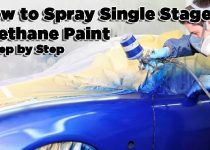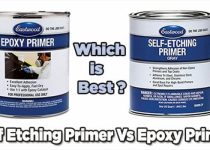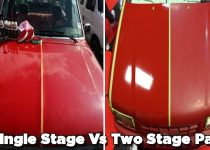Painting Over Factory Paint on Car [7 Ways to Finish]
Factory paint, with its immense facilities, had already won the hearts of many employees of many industries. It brings change to a piece of equipment in the most surprising way. Most manufacturers protect their auto by using this factory paint. As this paint increases the durability of the vehicle, many modern car manufacturers are adopting factory paint to manufacture better versions of the car.
However, painting over factory paint is another trend that is followed by DIYers. Factory paint itself protects your car for many years and prevents it from rusting. It also helps to reduce the effect of oxidation on your four-wheel car and other metallic or painted surfaces. Applying paint again over the existing car paint will bring extra protection, and most people are not aware of this amazing idea. But this whole method requires some carefulness and detailed attention.
Otherwise, things might get out of hand. That’s why we are here to lead you to the right path and guide you through the process of painting your equipment all over the old car paint. So, without further ado, let’s jump into our intended segment.
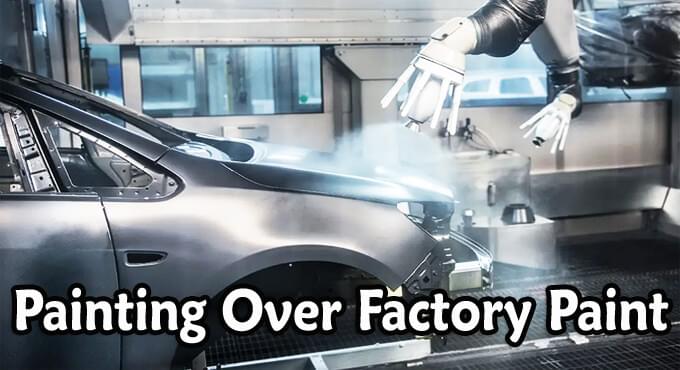
Table of Contents:=>
Can You Paint over Existing Auto Paint?
It is possible to paint over existing auto paint. All you need to do is to care about the condition of the existing auto paint. If it is damaged and baked on already, then you need to sand or scuff it properly. But if the old auto paint is not cracked and is rather seamless, then you are good to go. It is because the cracked old car paint loses all its ability to adhere to the new paint. Therefore, you need to be more careful about this fact. On top of that, your existing auto paint can withstand primer on it, so the new, freshly coated paint has great adhesion on the surface. You will have some advantages and downsides to the fact too.
Advantages:
First of all, you can save a huge amount of money by not removing the existing auto paint. Abolishing old auto paint requires some process, and money has to be spent on it. Secondly, you can save yourself from the hard labor of removing existing auto paint. This actually asks for a hell of hard work. Thirdly, the primer would work along with the existing auto paint, so things get easier. On top of that, painting over existing auto paint increases the beauty of the surface and helps to pop the color of it to a great extent.
Disadvantages:
There are some downsides to painting over existing auto paint. You need to be a little skillful to accomplish the job. Besides, the right choice of sandpaper grit is important. Otherwise, the existing paint will get ruined. Also, you cannot use a primer of any quality. You need to ensure the maximum quality and adhesion of the primer that you are going to apply to the existing paint. Also, to get a satisfying result, you need to have proper materials and patience, too.
Before Painting Over Factory Paint on Car – 4 Things to Consider:
As factory paint comes with its own adhesive strength and benefits, this paint is enough to hold all your requirements. The eminent feature of this paint is not for all kinds of materials. But it suits mostly the materials that are concrete and hard. Basically, metals, timbers, and automobiles are suitable materials for applying factory paint. However, you can also apply paint over factory paint, if you just know what facts you should consider to accomplish your motive.
1) No Need to Strip Off –
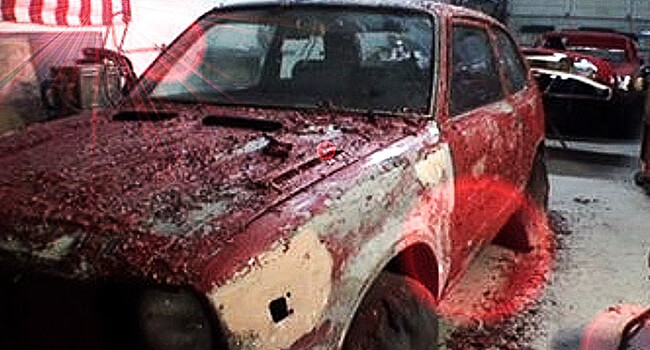
Many people have this tendency to strip off the old paint before applying new paint. This can be done if the old paint is damaged and cracked. Besides, if it is cheap paint, and stripping off the old paint won’t affect the surface of the material, then it’s alright to do so. But problems happen when you try to strip factory paint from a metallic surface.
As this factory paint provides excessive adhesion, it is almost impossible to strip off the paint from the surface. On top of that, stripping might damage your important equipment. Rather, painting over the remaining factory paint brings extra advantages to your job. It embodies the strength of the adhesion with the addition of new paint and makes your paint better looking than ever.
2) Choose the Best Primer –
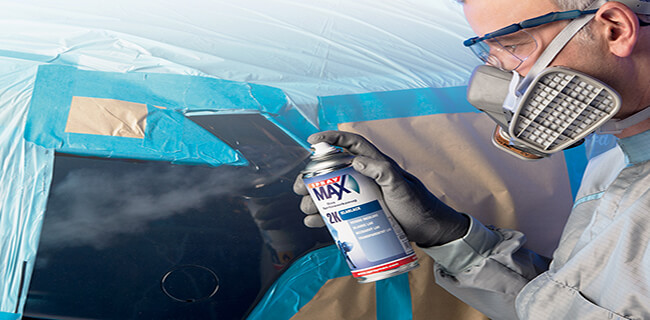
It’s a great matter of fact that you use a primer before painting on the factory paint. Primer comes in different types and qualities. But you need to understand that not all types of primer can be applied to factory paint. It comes with a heavy-duty feature and a normal primer cannot get along with it.
A primer that comes with auto paint particles is supposed to be the best primer for this situation. However, we consider epoxy primer as the best primer to apply over factory paint before applying fresh paint. This primer provides a seamless finish on metal-based surfaces. Even a coat of urethane primer cannot cope because of its sanding requirement.
3) Find out a Capable Paint –
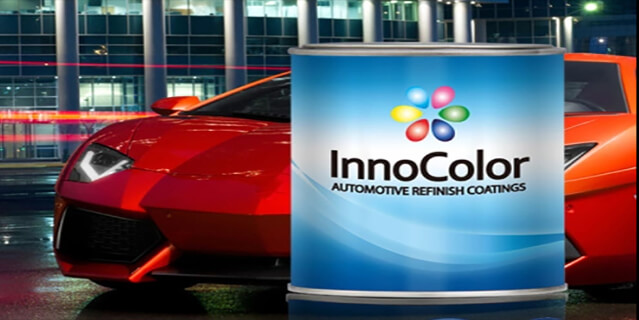
Paints that are heavy-duty and fine formulated in feature should be used over factory paint. A cheap-rated paint will affect reversely the factory paint and therefore, will ruin your favorite material. You don’t want this disaster, or do you? That’s why you have to be serious about finding suitable high adhesive paint.
Generally, solid paint, metallic finishes, matte finish, or pearlescent finish paint gives some extra vibe to the metallic heavy material. These paints are highly top-notch and industry standard. However, acrylic urethane or polyurethane enamel paints are what we suggest people use in such a condition.
4) Be Careful with Sanding –
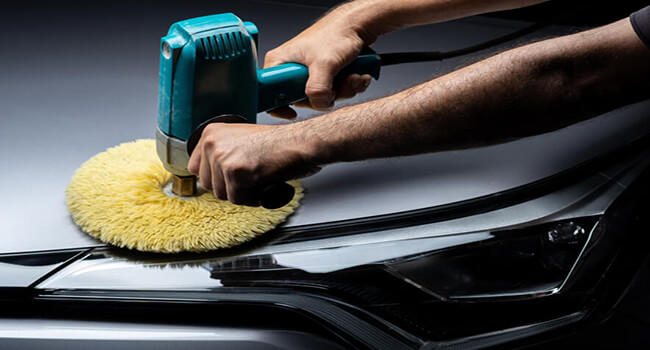
Sanding means using rough or coarse paper to even the surface and alleviate the existing paint. This process is not always important to do while painting anew. When you intend to paint over factory paint to just give a new look to the material, and the existing factory paint has not yet torn or worn out, then sanding is not required.
Factory paint already offers a great finishing and even surface. It is almost like a ready-made surface to apply fresh paint over it. Therefore, in situations like this, try to avoid sanding. But if you see that the factory paint over the metallic surface is decaying, then sanding is applicable. It also depends on the condition of the remaining factory paint if it needs heavy sanding or mild sanding.
Process of Painting Over Existing Auto Paint: In 7 Steps:
To paint over a factory paint car requires preparation, as it is not a silly game. Maybe you are risking the beauty of your favorite vehicle if you do not have enough preparation. Taking the job seriously is another important fact that you should consider as well. Painting over factory paint car is not a troublesome job if you just learn the major aspects of it. If you have learned enough about the right process, you can give a beautiful transformation to your vehicle or metal-based material, and painting over an old painted car will seem a fun job at the same time.
However, you can literally pack up by just scuffing and shooting paint jobs. But you also have to keep in mind that you are taking your own risk by taking the decision of painting over factory paint. Nevertheless, we hope you come out with the best result by abiding by the following method step by step.
Step-1: Collect Your Materials –
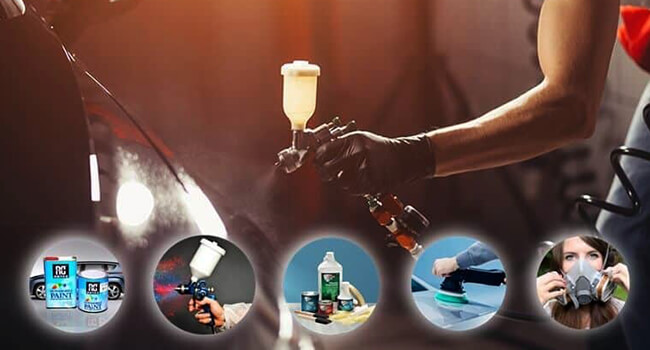
It is always easy and convenient if you collect your materials firsthand. As painting legit requires some solid materials, better collect them beforehand and then start your preparation and painting process. Some of the materials that we will be mentioning here can be altered or rejected in the process if needed. It’s up to the condition of your equipment that you are going to give a new look.
Let’s take a glance at the list of materials that you’ll need during the process.
- Hand Pads
- Pre-Painting Prep
- Topcoat sprayer
- Hand gloves
- Mask
- Enough ventilation system
- Sandpaper
- Soapy and warm water
- Grease and wax remover
- Primer
- Sealer
- Wet rag and a clean cloth
Step-2: Remove the Grease –
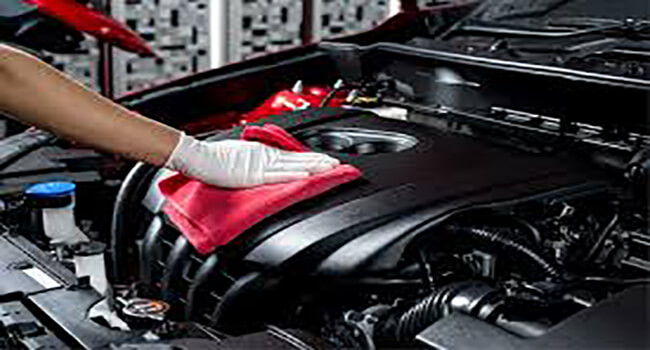
We assume for the time being that you are going to paint anew over factory paint on a vehicle. Now, for the next step, you need to inspect your vehicle attentively. For this, check out your vehicle conspicuously. If the vehicle is old enough, there might be some grease or hard residue that needs to be removed.
To remove this extra grease on the metallic parts, use grease and wax remover. Spread the remover on that particular space where the grease is gathered and let it rest for some time. After that, use a wet rag to wipe out the grease. For the residue, use the remover again and follow the same steps. It will lessen the amount of residue to a great extent.
Step-3: Wash Your Car –
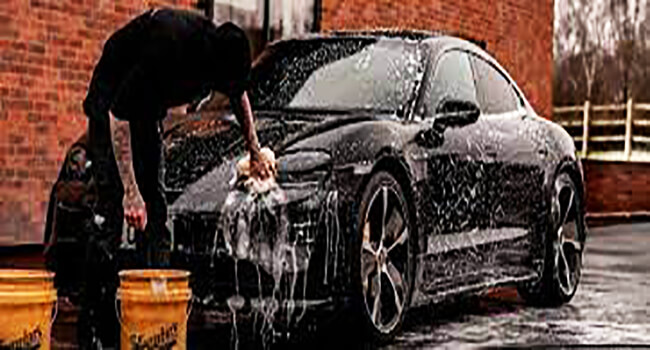
After removing the grease with grease and wax remover, your next job is to wash your vehicle perfectly. You cannot just paint on your vehicle without removing the dust and soil it carries. Otherwise, the painting will adhere to the surface, and you will have to forget the expectation of having a seamless finishing look on your vehicle.
Therefore, cleaning freshwater is one of the most important tasks. Use soapy and warm water to wash your vehicle. It helps in removing the stubborn dirt from your vehicle and enhances its beauty of it twice at a time. Besides, the fresh paint will cope with the dust-free real quick. After you give it a wash, make sure there is enough ventilation system to make your vehicle dry before you start painting over it.
Step-4: Scuff and Sand Your Vehicle –
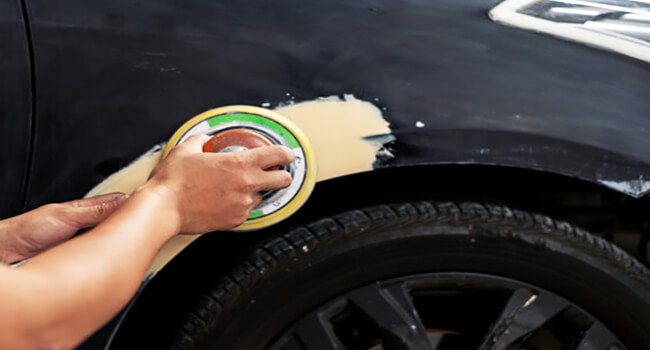
The next step requires some real labor. But before that, protect your hands by wearing hand gloves. Then start to scuff the existing factory paint on your vehicle. There are some top-notch hand pads available in the market. You can use Contour Non-Woven hand pads for the process. This scuff stuff is beneficial for any metallic material. Scuff and shoot the paint job afterward.
They work smoothly on the surface. However, scuffing is not efficient for spaces where you have dings. Many cars possess door dings where you should use sandpaper to fill them. Sand those areas where you find dings Use 80 grit to 180 grit or more sandpaper and get yourself done with the job. Better clean your vehicle again.
However, this step is not required for all situations. Painting over an old painted car might require this step. So, you can avoid this step if your vehicle looks seamless and without any damage or cracks and you just want to change the appearance by painting over it afresh.
Step-5: Prime your Vehicle –
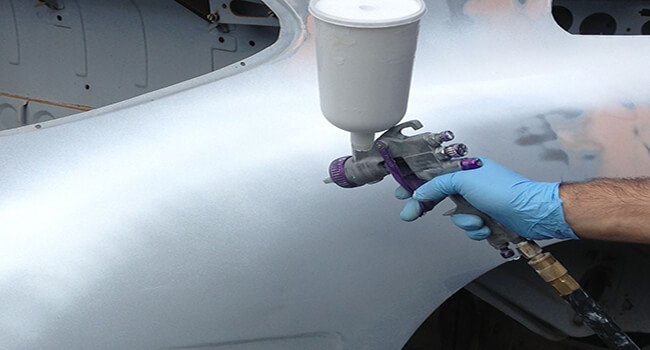
The next step is to prime your vehicle. Bring the heavy-duty primer from the nearest hardware store. Take a note of the ingredient and check if it carries automotive particles in it. After collecting the primer, spread it over the vehicle.
Give a clear thing coat. Remember a thin coat will enhance the color of the new paint. If you put a deep coat on your vehicle then you will not get an evident and vivid color of your painting. But a thin coat will help to pull out the real, authentic color of the paint.
Step-6: Use Pre-Painting Prep –
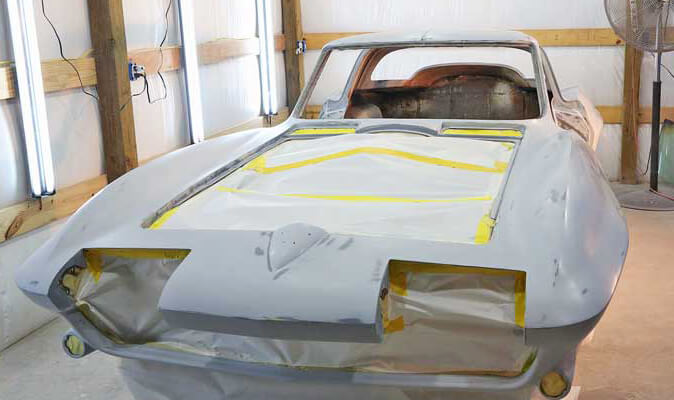
In this step, we are going to introduce you to a substance that literally works like a magic wand. This substance is known as pre-painting prep. If you use this substance, many of the steps that we have uttered before can be avoided. This substance helps to remove extra dirt, oil, grease, buffing pounds, and other complexions as well.
Thus, it prepares the surface for a fresh coat of paint. It comes in a spray bottle to offer a simplistic way of getting the advantage. Just spray the substance paint over the car. Then take a clean cloth and wipe off the dirt and extra buffs from the surface. The dirt will come off the surface, and it will be evident on the clean cloth. This substance is wholesome in one word as it prepares the surface for the main step, which is painting. Read Also: Clear Coat Over Metallic Paint: 5 Ways to Enhance Beauty.
Step-7: Apply Topcoat Sprayer and Seal It –
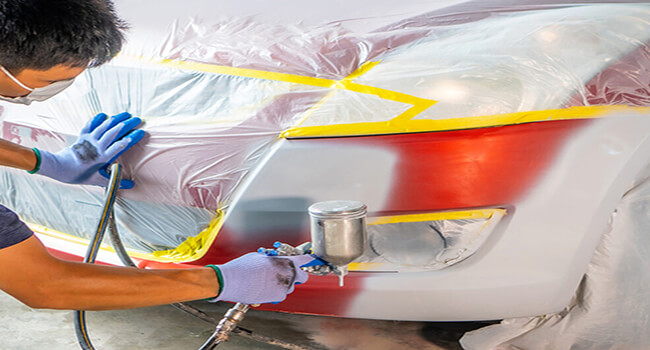
This can be the last step if you don’t want to use a sealer. For this step, get a highly recommended topcoat sprayer. Ask for suggestions from the professionals in choosing the sprayer. Sprayers are the best option as they are easy to apply. Now, after buying the top-notch topcoat sprayer, it’s time to spray your vehicle carefully.
For this, you should keep your hand gloves on as the chemical might affect your hands, and use a mask as well. Now, start spraying the vehicle. Move from left to right while spraying in a steady motion so that all the spaces get covered with paint. A single coat is enough, but if you want deep coloring, then wait till the first coat gets dry and then go for the second coating.
After applying the topcoat, you are good to go with the new transformation of your vehicle, as the topcoat itself works as a sealer. But if you want extra protection, then seal the topcoat with a first-class sealer, and you are done.
FAQs –
Q1. Can I clear coat over factory paint?
Ans: You can certainly clear coat over factory paint. Many people use this vehicle’s clear coat over factory paint. The benefit of this clear coat is it increases the beauty of the vehicle by giving it a glossy and transparent impression. It also provides immense protection to the car.
Q2. Can you primer over old car paint without sanding?
Ans: It’s a risk to primer over old car paint without sanding. Old car paint is supposed to get baked on or buffed up with time. Therefore, it requires sanding before you tend to apply primer over it. Otherwise, the primer will not work effectively as the primer starts to lose its adhesion in want of an uneven surface.
Last Updated on July 2, 2025 by Rogers Weber
[As an Amazon Associate I earn from qualifying purchases.]